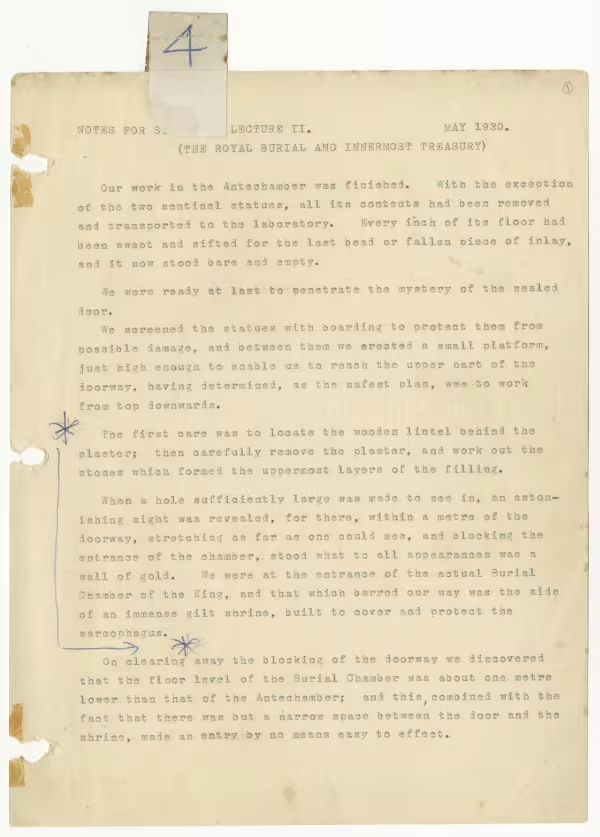TAA i.12.13
Start of Lecture on "Note for Stockholm Lecture II. (Royal Burial and Innermost Treasury)".

© Griffith Institute,
University of Oxford
(1)
NOTES FOR S. LECTURE II. MAY 1930.
(THE ROYAL BURIAL AND INNERMOST TREASURY)
Our work in the Antechamber was finished. With the exception
of the two sentinel statues, all its contents had been removed
and transported to the laboratory. Every inch of the floor had
been swept and sifted for the last bead or fallen piece of inlay,
and it now stood bare and empty.
We were ready at last to penetrate the mystery of the sealed
door.
We screened the statues with boarding to protect them from
possible damage, and between them we erected a small platform,
just high enough to enable us to reach the upper part of the
doorway, having determined, as the safest plan, was to work
from top downwards.
The first care was to locate the wooden lintel behind the
plaster; then carefully remove the plaster, and work out the
stones which formed the uppermost layers of the filling.
When a hole sufficiently large was made to see in, an aston-
ishing sight was revealed, for there, within a metre of the
doorway, stretching as far as one could see, and blocking the
entrance of the chamber, stood what to all appearances was a
wall of gold. We were at the entrance of the actual Burial
Chamber of the King, and that which barred our way was the side
of an immense gilt shrine, built to cover and protect the
sarcophagus.
On clearing away the blocking of the doorway we discovered
that the floor level of the Burial Chamber was about one metre
lower than that of the Antechamber; and this<,> combined with the
fact that there was but a narrow space between the door and the
shrine, made an entry by no means easy to effect.